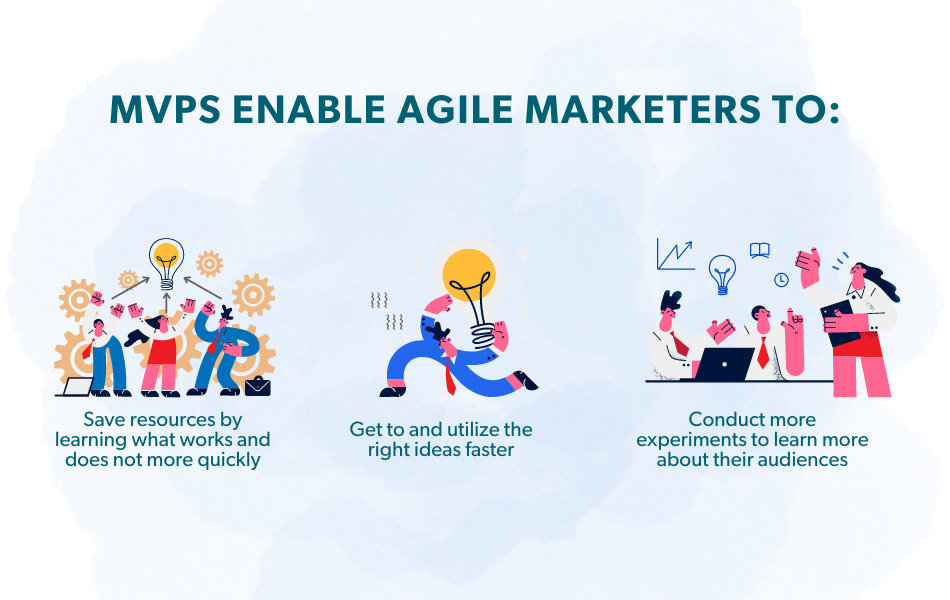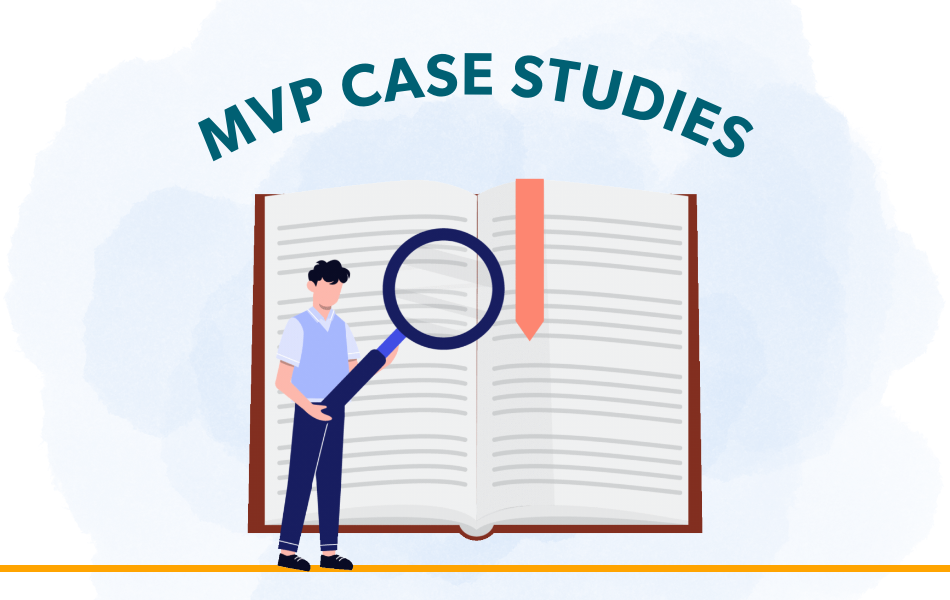Improve your Marketing Ops every week
Subscribe to our blog to get insights sent directly to your inbox.
Confront your process problems head on with a Sherpa by your side.
Explore support options that are tailored to meet you wherever you are on your climb.
Browse our pioneering Agile marketing courses
Learn from the stories of marketers already on the road to process improvement.
Featured Resource

State of Agile Marketing
Learn from 8 years of study on how marketers are increasing their agility.
Download Report
After becoming mainstream in the software development industry, Agile marketing is only growing more popular in Highly Regulated Sectors (HRS) like Banking, Financial Services, and Insurance (BFSI) and Health and Life Sciences (HLS) . Yet, marketers in these companies still hesitate to use one of the most potent tools in the Agile marketing playbook: the Minimum Viable Product (MVP) in their high stakes environments.
Unfortunately, this hesitation has serious costs associated with it. MVPs are what allows Agile marketers to efficiently test ideas, learn, and improve faster than their traditional counterparts. They are a core tool for any Agile marketing team.
The good news is that there are ways for even the most regulated companies to effectively use MVPs in their Agile marketing. Below, we’ll outline how this can be done with several case studies taken from teams we’ve coached through the years and other HRS organizations which have transitioned to Agile marketing.
But first, we have to understand how powerful MVPs can really be for the marketing function.
True marketing agility requires fast and responsive experimentation. If you’re not generating ideas and testing them, you can have all the daily standups and retros you want, but you’re not going to be able to determine whether they can provide real value.

Essentially, without an MVP, Agile marketing quickly becomes Waterfall marketing, as campaigns or projects can only generate value when fully realized. But the benefits go beyond simply avoiding old-fashioned Waterfall marketing. MVPs enable Agile marketers to:
These benefits are not secondary, they are at the core of what makes Agile marketing effective. In practice, this can be something as simple as devoting a small ad budget to see how a specific audience responds to a new campaign idea. Or, it could be running a campaign in a small market to see how it performs, incorporating those learnings into a full-sized version.
But if MVPs are so useful, what leads HRS to avoid using them?
Unfortunately, many professionals in Highly Regulated Sectors still believe that MVPs are something only used by scrappy startups to test their new product ideas. This often creates the impression that they are a tool only used out of necessity. After all, with the greater resources available to most companies in HRS, why bother resorting to MVPs like a startup would?
The irony is right in front of us, as many larger companies invest massive resources into finding ways to harness some of the dynamism of those startups. Dismissing strategies like the employment of MVPs only further reinforces the competitive disadvantages larger HRS face.
In a related line of thinking, many banks, pharma, and insurance companies think they can’t conduct an MVP before they roll something out because it will make their image seem unpolished or unprofessional. They may assume an MVP is by definition something half-baked or subpar.
Of course, these perspectives miss several key elements of a successful MVP.
The element of MVPs that gets underemphasized here is the V, the Viable part. The belief that an MVP will inevitably be some kind of half-baked idea which could hurt the company’s image or even raise the ire of regulators ignores that critical middle word.
By definition, if an MVP is half-baked then it is not viable. If it’s not viable, then it’s not an MVP. The reality is that even large multinationals in HRS can create and use MVPs without harming their image or sacrificing quality. You can find examples in support of this by exploring the case studies below.
Consider this, if you use MVPs in your product development, why not marketing? MVPs are great for these industries because they allow you to try something without risking the enormous resources required to go all in. To take another example from the highly-regulated pharmaceutical industry, you can think of an MVP like a clinical trial. It’s not a full drug release, it’s a narrower test to determine its efficacy in a specific context.
Customers don’t need to know it’s an experiment, it can be an A/B test where they don’t know it’s one of many versions (sometimes known as a stealth MVP).
So many of the core concerns HRS professionals have about MVPs are based on faulty assumptions. But to really understand the value MVPs can bring to HRS, we should look at real stories of companies that are actually using them to maximize the impact of their campaigns.

Operating in healthcare and pharmaceuticals means Chemmart is subject to a large amount of regulatory scrutiny in terms of how it conducts its marketing. After transitioning to Agile marketing, Chemmart began conducting many tests and experiments during their two-week marketing sprints.
The feedback they were able to gain from this consistent experimentation massively increased the speed at which they could make decisions without sacrificing quality. The overall result has been to shorten marketing turnaround times from 2 months to 2 hours while simultaneously increasing customer satisfaction by 50% and saving millions.
Cornell University wanted to rework the way it marketed its digital offerings like online courses. By transitioning to Agile marketing, they were able to quickly identify small changes and features to offer as MVPs on the platform.
Each of these changes created a new opportunity to gather data, test, and improve, as well as react quickly when any problems arose. The result of these improvements was a successful digital platform which has become a reliable way for the university to grow its profile and serve more students.
Working in the financial services industry, Santander was used to long booking times and lengthy review cycles for its marketing. When their marketing department made the transition to Agile, these were replaced with smaller, lower-risk campaigns which could fit into two week sprints.
By switching from traditional, long-run Waterfall marketing campaigns to shorter MVP-style cycles, Santander was able to boost its Net Promoter Score and related customer loyalty metrics to the highest they had been in decades.
Now that you’ve gained a fuller understanding of the importance of MVPs to Agile marketing and how even HRS organizations can use them, you may be wondering what your next steps should be.
The most effective way to begin incorporating Agile MVPs into your marketing is to work with an Agile coach with experience doing just that. We’ve helped banks, pharmaceutical companies, and other HRS organizations make full Agile transformations, giving us valuable insights into just how they can best utilize Agile strategies like MVPs. So if you’re wondering precisely how you can best use MVPs in your Agile marketing, get in touch.
Subscribe to our blog to get insights sent directly to your inbox.
Subscribe to our blog to get insights sent directly to your inbox.